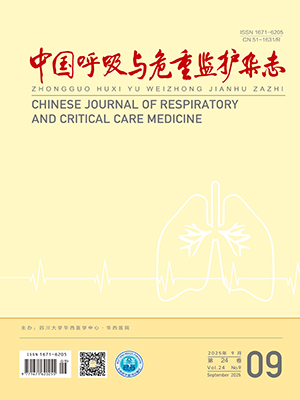Objective To evaluate the influence of tidal volume on the accuracy of stroke volume variation ( SVV) to predict volume state of pigs with ventilation.
Methods Thirty-six healthy pigs were anesthetized after tracheal intubation and ventilated. With the envelope method, they were randomized into a normovolemia group, a hemaerrhagic shock group, and a hypervolemia group, with 12 pigs in each group. The pigs in the hemaerrhagic shock group were removed 20 percent of blood, and the pigs in the hypervolemia group received additional infusion of 20 percent 6% hydroxyethyl starch. In each group, ventilator settings were changed in a randomized order by changing VT [ VT = 5 mL/kg ( VT5 ) , VT =10 mL/kg ( VT10 ) , and VT =15 mL/kg ( VT15 ) ] . Hemodynamic measurements [ heart rate ( HR) , mean arterial boold pressure ( MAP) , systemic vascular resistance index ( SVRI) , cardiac index ( CI) , stroke volume index ( SVI) , intrathoracic blood volume index( ITBVI) , and SVV] were obtained after 10 minutes of stabilization.
Results SVV was increased in the hemaerrhagic shock group comparing with the normovolemia group for VT10 [ ( 21 ±5) % vs. ( 11 ±2) % , P lt;0. 05] , but SVV was decreased in the hypervolemia group comparing with the normovolemia group [ ( 7 ±2) % vs. ( 11 ±2) % , P lt; 0. 05] . The variation tendency for VT15 was the same with VT10 , moreover SVV were all above 12% for the hemaerrhagic shock group, the normovolemia group, and the hypervolemia group [ ( 30 ±7) % , ( 19 ±3) % , and ( 15 ±4) % ] . There were no significant diffrences among the hemaerrhagic shock group, hypervolemia group and normovolemia group [ ( 8 ±6) % ,( 7 ±5) % , and ( 7 ±4) % , P gt; 0. 05] for VT5 .
Conclusions SVV was a precise indicator of cardiac preload, but SVV was less sensitive to the changes of volume during low tidal volume ( 5 mL/kg) ventilation. The threshold of SVV for predicting fluid responsiveness maybe above 12% with a high tidal volume ( 15 mL/kg) ventilation.
Citation: LIU Ning,GU Qin,YU Jianfeng,SUN Dongmei,LIU Yang. Influence of Tidal Volume on Evaluation of Volume State by Stroke Volume Variation in Pigs with Ventilation. Chinese Journal of Respiratory and Critical Care Medicine, 2012, 11(3): 238-241. doi: Copy
Copyright © the editorial department of Chinese Journal of Respiratory and Critical Care Medicine of West China Medical Publisher. All rights reserved




